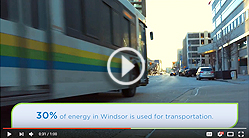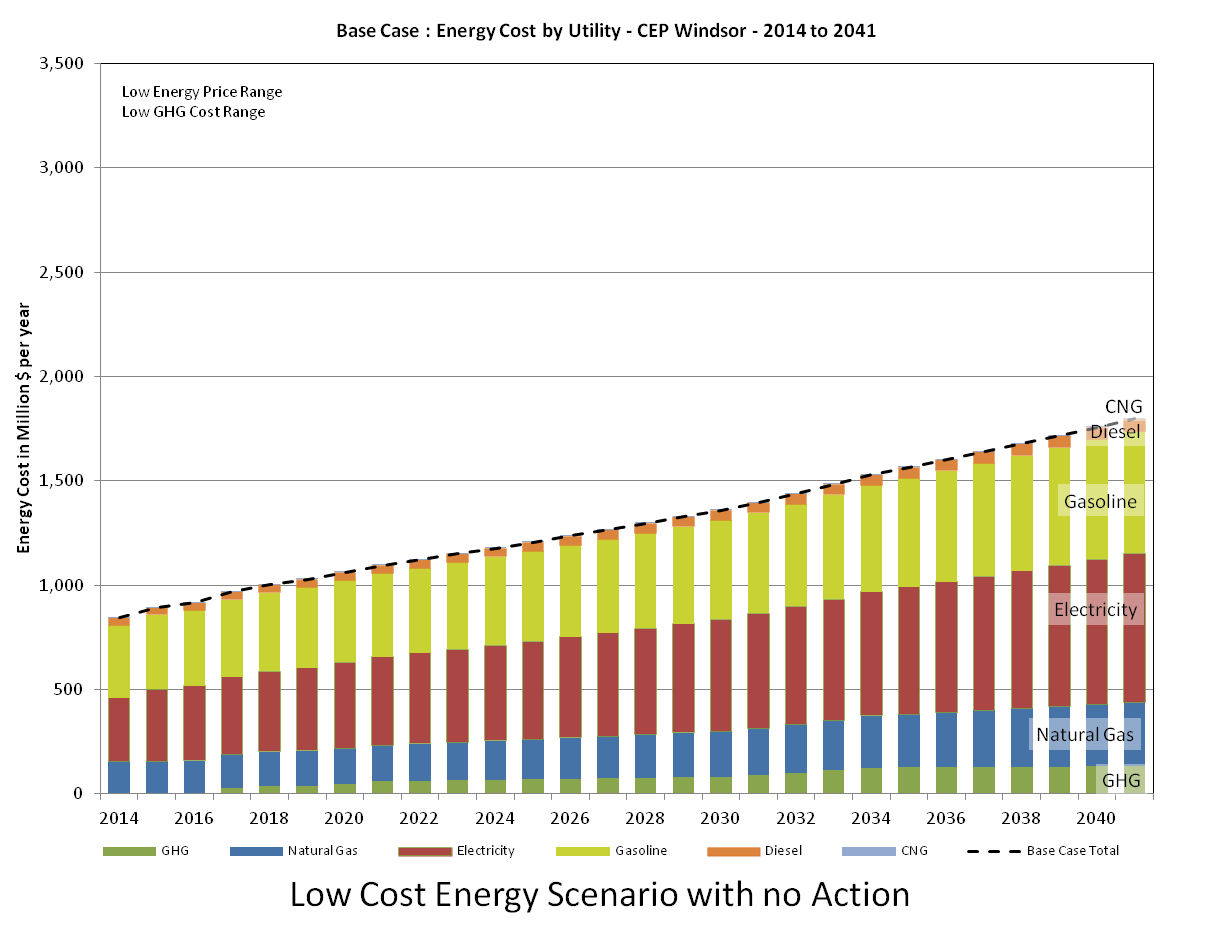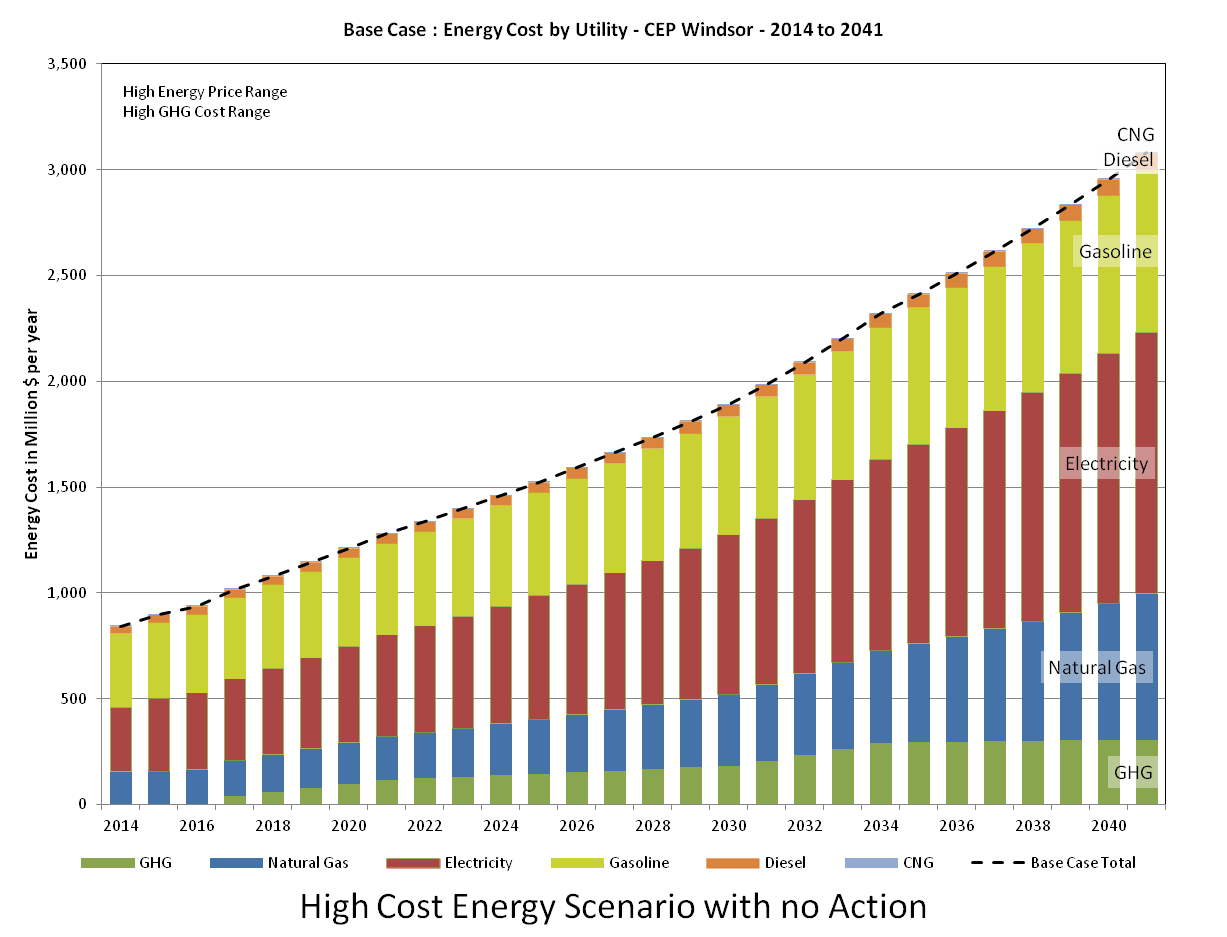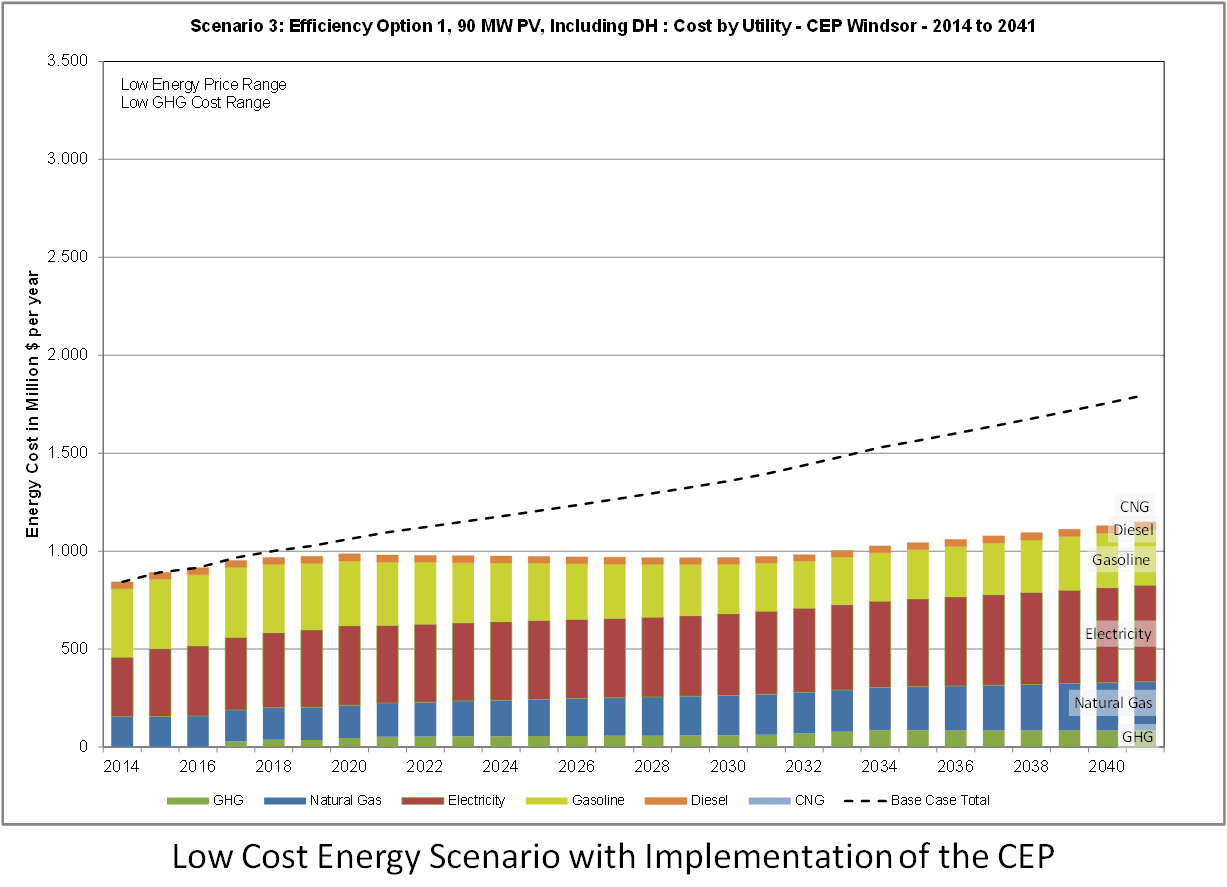Windsor Energy Usage
Community Energy Plan (CEP) and Corporate Climate Action Plan (CCAP)
On Monday, July 17, 2017, City Council approved the City of Windsor's Community Energy Plan and associated Corporate Climate Action Plan.
For highlights, check out our videos, available in the shorter Community Energy Plan Ad or our full-length Community Energy Plan Education Video!
The Community Energy Plan (CEP) was developed over the course of 18 months under the thoughtful guidance of a multi-stakeholder task force representing all the major sectors in the Windsor community. The process started with the creation of a shared understanding of current energy use using 2014 as a baseline year, and projecting future energy use (base case) for 2041 with no changes to address energy in Windsor.
Low Cost Energy Scenario with no Action (click to enlarge):
High Cost Energy Scenario with no Action (click to enlarge):
Quick Facts: Windsor's Energy Use in 2014
Costs of Energy (2014)
- The total amount the Windsor community spent on energy (including electricity, natural gas, and transportation fuels) was $842 million dollars , 80 percent which leaves the local economy.
- Total amount the City of Windsor spent on energy was $22 million.
Energy Use (2014)
- Total energy use by the Windsor community was 38 million GigaJoules (GJ) or 182 GJ per person of which 49 percent was used by buildings.
- Total energy used by the City of Windsor was 839,900 GJ which represents only 1 percent of the total energy used in Windsor.
- This means that even if industries and the municipality were to significantly reduce the amount of energy they use, the amount of money spent on energy in Windsor would not significantly decrease. To reduce costs, action is needed to reduce energy use associated with buildings and transportation.
Greenhouse Gas Emissions (2014)
- Total amount of GHG emissions produced by the Windsor community was 1.9 million tonnes of which 36 percent came from transportation.
- Total amount of GHG emissions produced by the City of Windsor was 30,470 tonnes.
This shared understanding of the current and future energy use in Windsor allowed the task force to shape the vision, principles, goals and targets by asking, "What do we need to do today to achieve the types of outcomes we wish for 2041?"
CEP Vision:
The Community Energy Plan aims to create economic advantage, mitigate climate change, and improve energy performance. It strives to position Windsor as an energy centre of excellence that boasts efficient, innovative, and reliable energy systems that contribute to the quality of life of residents and businesses.
CEP Targets:
Through the implementation of this Plan, the Windsor community will:
- Reduce per capita primary energy use by 40 percent from 2014 baseline by 2041; and
- Reduce per capita GHG emissions by 40 percent from 2014 by 2041.
These ambitious and transformative targets support global efforts to keep global temperature increases within 1.5C and meet the targets in the 2016 Ontario Climate Action Plan. These targets will be achieved through the implementation of the CEP Strategies and position the Windsor Community as an energy leader by achieving today's best practices by 2041.
The Implications of Not Acting on Energy and Climate
Without any actions at the local level the implications for Windsor are significant. Implications include:
- Increases in the costs of energy:
- Through the community survey, many Windsorites indicated that the price of electricity is high and due to fixed costs, and it is perceived that personal energy conservation does not result in substantial cost savings. Although energy prices are beyond the community's control, the CEP aims to mitigate the effects of energy costs to users in two ways:
- By conserving energy and focusing on energy efficiency
- By switching the type of energy used
- These two strategies result in changes to the fuel cost structure to lower costs, because the total cost of energy to the user is influenced by the price/unit of energy used and amount of energy used.
- For the Windsor community, there is a potential total costs increase from $842 million per year in 2014 to $1.8 to $3.1 billion in 2041.
- For the City of Windsor, there is a potential total costs increase from $22 million per year to $48.8 to $81 million per year by 2041.
- Increases in the total amount of energy used:
- For the Windsor community, there is a potential 22 percent increase from 38.5 Petajoules/year to 46.9 Petajoules/year by 2041.
- For the City of Windsor there is a potential 30 percent increase from 839,990 GJ to 1,124,580 GJ in 2041.
- Increases in the total amount of GHG emissions:
- For the Windsor community, there is a potential 19 percent increase from 1.85 million tonnes to 2.2 million tonnes by 2041.
- For the City of Windsor, there is a potential 43 percent increase from 30,470 tonnes to 43,670 tonnes.
Low Cost Energy Scenario with Implementation of the CEP (click to enlarge):
High Cost Energy Scenario with Implementation of the CEP (click to enlarge):
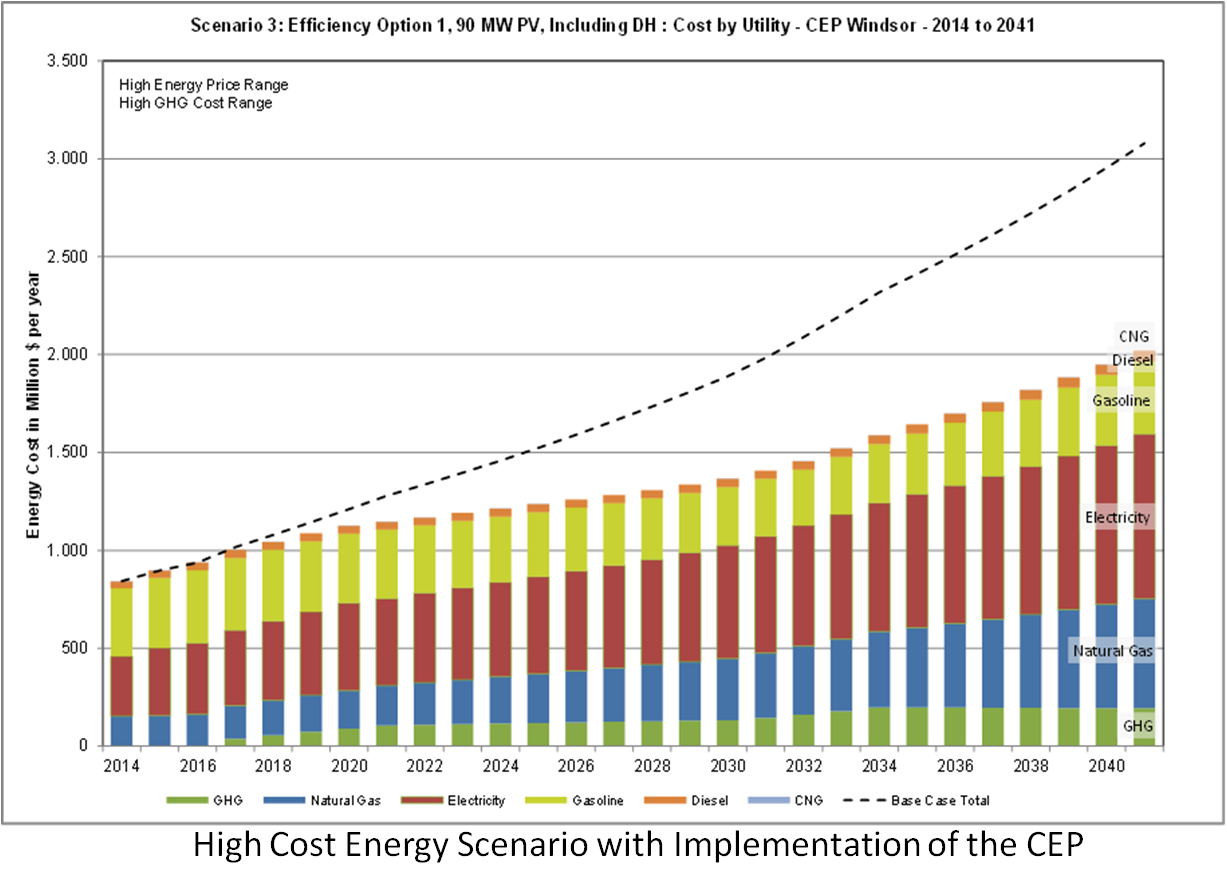
The financial and environmental impacts for Windsor are significant. A commitment to action towards addressing energy and emissions now and in the future is needed. Whether driven by economics, innovation, GHG emissions reduction, environmental stewardship, risk mitigation, quality of life, or preparing for future legislation, the basis for proactively addressing energy use in Windsor is strong and the time for action is now.
Project funding support was provided by the Province of Ontario and the Federation of Canadian Municipalities.

